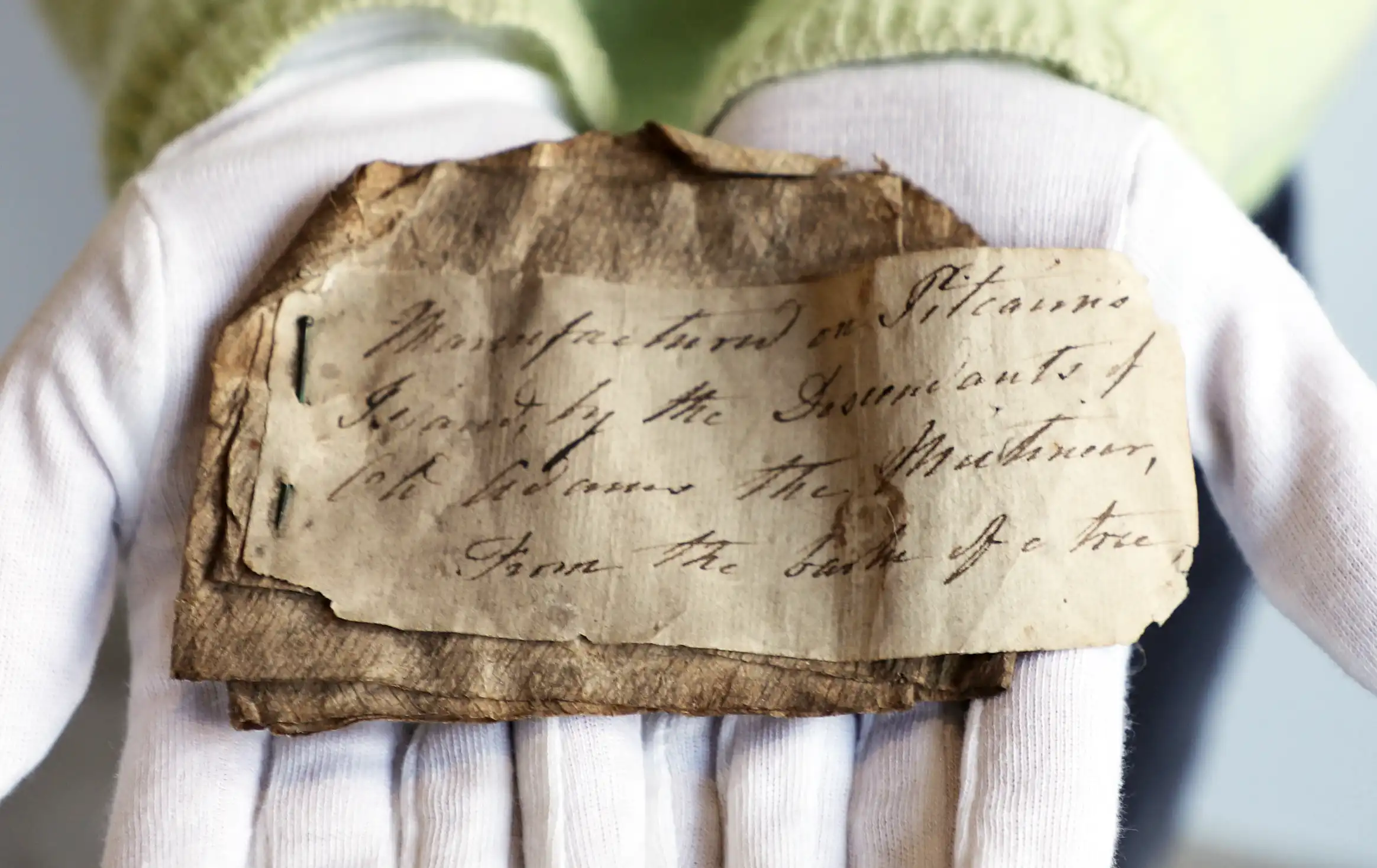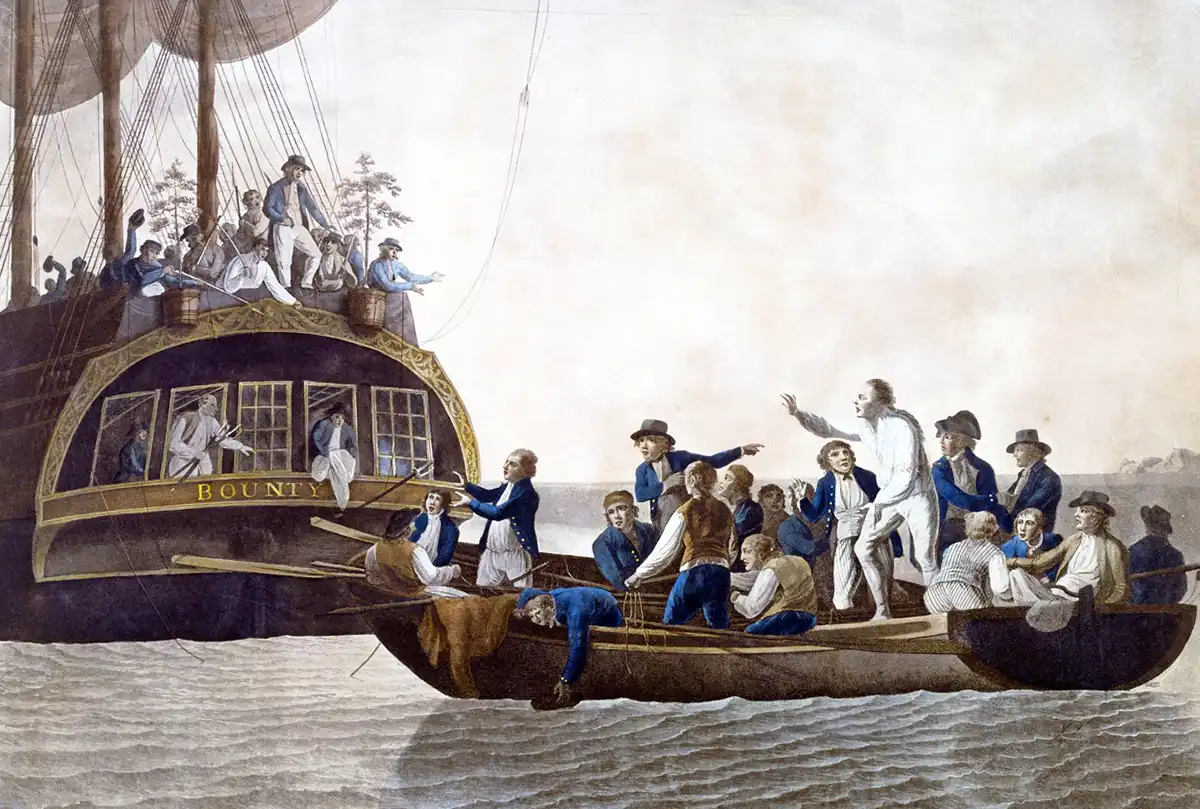AN item from Pitcairn Island – settled by mutineers from HMS Bounty and made by one of their descendants – is to go on sale in Dorset.
The infamous incident – known as the mutiny on the Bounty – saw the ship’s captain, William Bligh, set adrift by mutineers led by Fletcher Christian in 1789.
A group of the mutineers settled on Pitcairn Island in the South Pacific, including John Adams, who was found as the last surviving settler in 1808.
Now, more than 230 years after the infamous mutiny, an item made by one of Adams’ descendants will go under the hammer at Duke’s auction house, in Dorchester, on December 8.
The bark cloth, made from a tree on the island, has a note attached stating it was created by the descendants of Adams.
It is thought to date to 1837 and was the islanders’ version of paper or primitive fabric and was discovered in a secret drawer within a bureau.
The note, attached with a needle, tells how it was ‘manufactured on Pitcairn Island by the descendants of John Adams the mutineer, from the bark of a tree’.
The cloth will be auctioned during Duke’s 200th anniversary sale, with an estimate of £5,000 to £10,000.

Guy Schwinge, art adviser, said: “My client was restoring an old bureau when he discovered this Pitcairn memento inside it.
“It was quite an incredible find and fortunately a note attached states what it is and where it is from.
“There are only two other examples known about and one is in the British Museum that has a similar attached note and is dated 1837.
“It seems likely they were collected at the same time which was just eight years after the death of Adams who passed away aged 61 in 1829.
“He had four children so it is likely that one of them made this bark cloth that was collected by a passing ship.
“How it came to be hidden inside bureau will probably remain a mystery, but it is a wonderful item from one of the great maritime tales.”
The mutiny on the Bounty was made into a 1962 film starring Marlon Brando, Trevor Howard and Richard Harris.
She had been sent to the South pacific to collect breadfruit and take the cargo to the Caribbean.
While collecting the breadfruit plants, the men had been allowed to live ashore on Tahiti, where Christian married a native and others became close to the local women.
After setting sail in April 1789 mutiny broke out after relations between Christian and Bligh soured.
The ship was captured by Christian and 22 others who put Bligh and his men to sea in an open boat.
After a remarkable feat of navigation the ousted crew made it to the Dutch settlement of Coupang.

Fletcher Christian and the mutineers set Lieutenant William Bligh and 18 others adrift, depicted in a 1790 portrait by Robert Dodd
The mutineers returned to Tahiti but when the Royal Navy sent a ship to capture them, they – along with six Tahitian men and 11 women – set sail.
Eventually the ship landed on Pitcairn, a small island that had been misplaced on the Royal Navy’s charts.
They unloaded the supplies then torched the ship and began a new life on the previously uninhabited island.
But an idyllic life evaded the settlers who began killing each other and when, in 1808, a US ship found the community, only John Adams remained of Bounty’s original crew.
He had taken on the leadership role and ultimately created a peaceful Christian community, and the British decided to leave them alone.
The descendants of the mutineers still live on the island, which is administered from New Zealand.
“The capital is Adamstown, named after the longest-lived mutineer,” Guy added. “The story of the mutiny continues to fascinate, and items connected with it are highly collectible.
“The bark cloth is one of an great number of interesting items we are selling at a special auction to mark our 200th anniversary.”












Leave a Reply